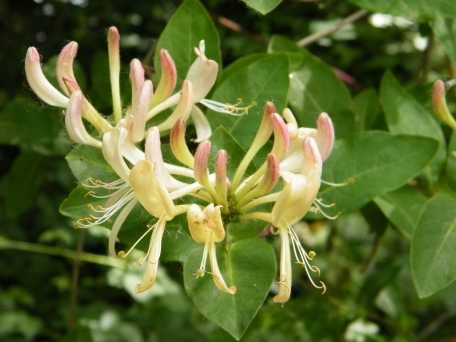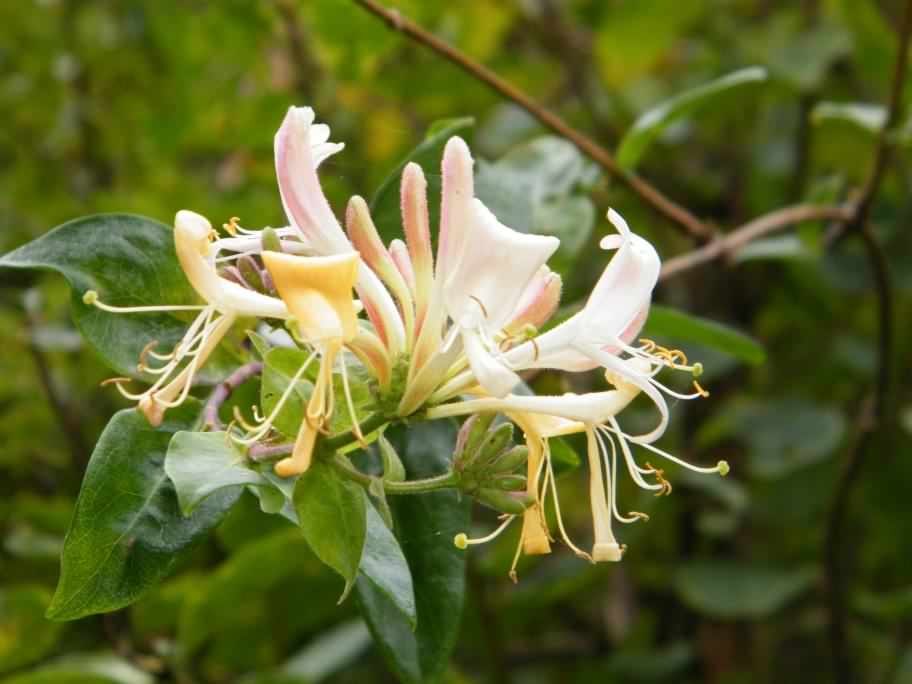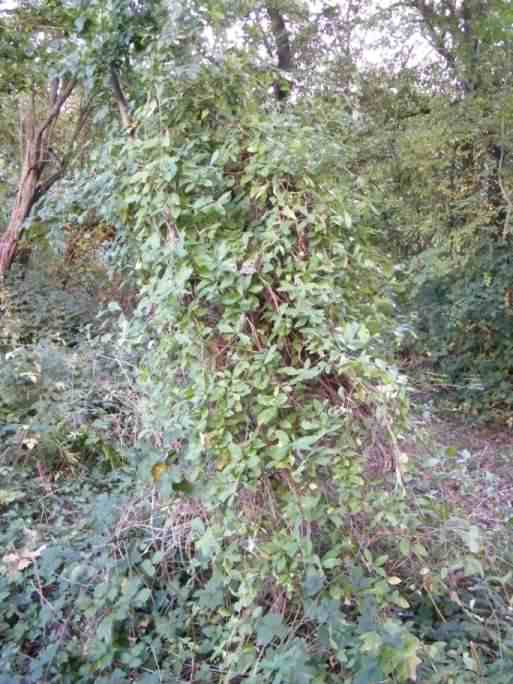


Photos ©2009–
Click any photo for a larger image

Honeysuckle - Lonicera periclymenum
Family - Caprifoliaceae
Also known as - European Honeysuckle, Woodbine
Some species of this plant are poisonous.
Honeysuckle is a familiar climbing vine or shrub of the Caprifoliaceae family consisting of about 181 species native to China, North America and Europe. Oval opposite leaves 1–10cm (0.4–4in) long, most varieties are deciduous but some are evergreen. Long Bell or trumpet shaped flowers that appear early in the season on short side shoots from the previous year's growth in many varied colours (predominately whites, yellows, oranges, reds and purple) that produce a sweet edible nectar favoured by bees, Bumblebees, butterflies and moths including the hummingbird hawk moth.
The fruit is usually a bright red but occasionally blue or black berry containing several seeds popular with some bird species such as Bullfinches, warblers and thrushes. In most forms of Honeysuckle the berries are poisonous, but a few, notably L. caerulea, have edible berries. They are popular garden plants with highly scented flowers found in climbing and shrub forms, the several plants we have in Brickfields Park are very probably from berries dropped by birds feeding on plants in bordering gardens.
It was voted the county flower of Warwickshire in 2002 following a poll by the wild flora conservation charity Plantlife.
 |
 |
 |
Photos ©2009– Click any photo for a larger image | ||
Site design ©1999– Brickfields Country Park - Privacy -